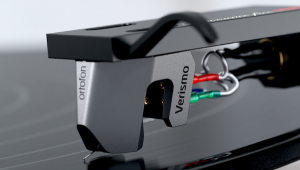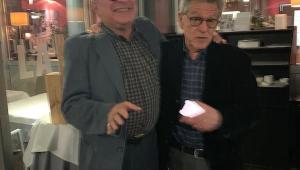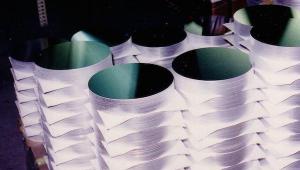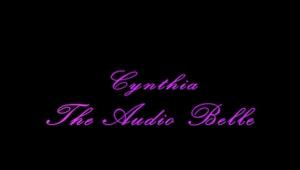Can't wait for the review.
Is HD Vinyl In Your Record Playing Future?

If what he is planning actually comes to pass, records could be "one step" mastered on a ceramic disc that could possibly press 10,000 records before it begins to wear. Watch the interview AnalogPlanet editor Michael Fremer conducted this week with Loibl in the Vienna offices of Pro-Ject CEO Heinz Lichtenegger.
- Log in or register to post comments


..is ugh. A 21st century CD?? Hope not.

Fantastic, but why can't it be done in analogue?
Gunther says the advantages of the 3D topographical model are that:
- The software can optimize the groove spacing due to knowing the deflection of the amplitude to give 30% more play time or dynamic range.
- It can correct for the tonearm radial angle.
- No stylus head coils to overheat at high frequencies.
It seems to me that an analogue laser process would have several advantages as well.
- You could still cut a positive.
- Your cutting head amplifier could be simpler as it wouldn't require a phase inversion stage.
- The amplifier could be of lower power as there wouldn't be friction from a physical stylus in lacquer.
- The lathe motor could be a smaller and lower rumble due to lack of friction from the cutting head.
- The groove spacing could also be improved over traditional processes as you wouldn't have deformation due deflection from the adjacent groove of the lacquer being cut.
The elephant in the room here is analogue. 95% of vinyl may be cut from digital files now, but as peoples knowledge becomes more sophisticated and the vinyl resurgence matures, were realizing that analogue sourced records sound better. This is reflected in the ever growing amount of new releases and reissues boasting of their analogue mastered providence.
Vinyl, is the most cost effective and convenient way to distribute high quality and true representation of the analogue tape. It seems that Gunther is making an assumption that for vinyl buyers now, it's only about having a physical product, something to hold, cover art etc. But I think this is selling music lovers short as more and more people recognize there's something special about the sound of a true analogue reproduction. I commend the effort to improve sound, processes and reduce costs but, is forcing a digital conversion stage in there really necessary?

On weekend I got the Analog Productions reel to reel 15 ips 2-track Rickie Lee Jones "It's Like This" on two reels. I play them into an all tubed prepre, all tubed pre and mono-amps into Tannoy concentric drivers. Believe me, Rickie sits in my room, when I close my eyes. Wonderful tape! BUT!, I also own an old laserdisc of RLJ "Live at the Fillmore". And NTSC-Laserdiscs had analog tracks, too. I did a lot of work to extract the analog signal direct from the demodulator before feeding the internal microchips of the LD-player and passes the analog signal directly into my preamp. Believe me, I compared this weekend, the analog track of the Laserdisc sounds as wonderful as the two track 15-ips tape. Honestly, the contrabass sounds more edgy on the LD and the live atmosphere on LD is more catchy recorded than the studio room on tape. I wish, the industry would rediscover the analog tracked LD, spoil the picture information and the added digital tracks on LD, concentrate of the potential of the analog audio tracks alone and produce LD with sound only, all analog tracks only. A 10" audio-only Laserdisc could easily carry the analog information of an Stereo-LP. And I guess, a 12" Laserdisc could carry 5.1 surround, all analog!

I wonder if LaserDisc sound is comparable to analog as we know it. I was just reading how it works and your comment came to mind.
LaserDisc sound (and image) starts as an FM-modulated signal. It is difficult to explain without pictures, but in essence the zero crossing points of this signal are recorded as varying length pits, for the negative part of the cycle, and as flat (i.e. no pit) sections for the positive part.
On playback these pits and flats recreate the FM signal, out of which the original image and sound signals are extracted.
I do not know enough math to understand if this pit / flat sequence can perfectly recreate the original signal.

That is a flawed concept right there. Essentially, if they correct these pressings for this angle, they are doing it for only one imaginary tonearm in the world. And, what is that? A nine inch tonearm that is standard on many turntables? What about ten inch arms? Twelve inch arms? Linear tracking arms? Yep, they're all theoretically screwed.
Just like RCA's flawed DynagrooVe concept in the 60s, this is essentially "pre-distorting" the groove to conform to the lowest common denominator of turntable, and leaving those of us with better arms with a poorer sounding product.
This is progress? Um, no.
Gunther is making an assumption that for vinyl buyers now, it's only about having a physical product, something to hold, cover art etc. But I think this is selling music lovers short as more and more people recognize there's something special about the sound of a true analogue reproduction.
Couldn't have said it better myself. "Because vinyl" is not a reason any of us own and play vinyl. Records have been cut the traditional way for, what, 100 years now? It's not perfect but on the other hand, if it ain't broke, we don't need some self-proclaimed engineer "fixing" it.
As an aside...for analog tape, I had some dimwit on one of my forums telling us all how his precious prerecorded reels "killed" any vinyl version. Hardly! Those reels from the 60s were mass duplicated at high speed, on duplicator-grade tape stock from questionable generation of master tape, and quality was all over the place. I bought few reels myself, mainly because 75% of them sounded like ass (and the worst were anything duplicated by Ampex in Elk Grove Village).
Engineer Tom Fine (whose parents were Robert Fine and Wilma Cozart Fine) put it best:
http://www.cool.conservation-us.org/byform/mailing-lists/arsclist/2008/0...

Thinking about it a disadvantage of an analogue system is that you would have to cut in real time (or half speed) and laser tech and materials may not be there yet. Quiet happy to be an arm chair expert here but I wish Gunther (an actual expert!) would explain why an analogue system is not possible.

I think it did explain it, when he said it takes 12 hours for the laser to cut one side. Doesn't that eliminate the possibility of analogue cutting, would require cutting in real time, or at least half speed?

But really, groove spacing calculation in 1 bit DSD?
How is that even... never mind.
What a technology!

Sounds like a great idea to me. I'll bet LP's produced this way will sound great.
Only the close minded dinosaurs won't like it.

but why not use the same process and 3D print the stamper instead of "cutting" the stamper with a laser? Is there not a 3D printer material available that would work? Or is it a cost thing?
Also, he says that the last copy (#10000) would have the same quality as the the first copy. If that is so, why stop at 10000? Why not go until there is/would be a drop in quality?
At any rate, sounds extremely interesting.

I will be most interested in listening to comparisons of this new product to the same thing on SACD or DSD download. It sounds like this is an accommodation to the current resurgence of vinyl, possibly for the better. If it is not significantly better then SACD or DSD then I would not see the point, except that if these new stampers can yield more discs per stamper that is NOT an insignificant thing for sure. MOre disc per press, less work, and more friendly to the environment would be a good thing.

But the Lib Haters of anything Positive will kill this..
it's GOT to be the Old Style crap we're all used to.
Nothing new is good ....
BS is in YOUR HEAD !!!

..and if gou Google, you will find that someone did it already four years ago:
https://www.google.com/url?sa=t&source=web&rct=j&url=%23&ved=0ahUKEwjfu9...
Obviously it requires improvement but the concept is the same.
Unfortunately it also goes to prove that "vinyl" is just a hipster tool to play digital. Of course this process requires digital tools: analog computers were never exactly a success. As importantly hi-res audio is readily available -- assuming anyone can reliably tell it apart from Red Book CD standard -- so why mess it up by putting it on a cave age medium like vinyl?
If analog is better -- for argument's sake, let us say that it is -- we need to find a better medium to listen to it. Guess what? That too exists, it is called reel to reel tape. All "analog vinyl" is made from that anyways so, again, why mess it up by putting it on a cave age medium?
I was just listening to a commercially made tape from 1971. It was near perfection. No scratches, no groove noise. Probably a fraction of the distortion on vinyl. It is the way to go.

as I wrote already as a comment on this page: further development of an audio only, full analog Laserdisc might have been the big deal. LD's are easier to store and to play and a LD-player is much less time-consuming to take care of (mine plays since 1998 without doing any servicing at all. It just sit's on the shelf and does its duty since nearly 20 years - no new expensive cartridge, no tone head, nothing. It's perfect.). And to play a prerecorded tape is not always easy: speed variations, track gaps, equalization, tape formula, alignement differ from machine to machine. A Leserdisc I put in the player, select the analoge track number, and that's it.


Seems they soon will ship the first records on vinyl.

I have one music LD -- a Wings live concert -- the sound track is analog and works perfectly. Not sure what else is available.
Not far behind is what they call the "Hi-Fi" sound track on VHS tapes. That is analog modulated as an FM signal. I remember when it first came out (late 80s?) we you used to make party mixes on those. Even in the long play, "LP" setting the sound was flawless. There must be some decent concert videos available with such Hi-Fi sound tracks.
I wonder if the LD analog tracks are FM modulated? I doubt it as they had to use CX noise reduction (similar to Dolby). With FM modulation that is not necessary.

but as with high speed tape, noise reduction is possible, but not really needed. LD carried one analog video track and several audio tracks. By concentrating on only analog 2 channel rpm-speed could have increased by a factor of 4, giving better frequency band with up to 80 kHz. There is no other analog media thinkable with such high potential for audiophile usage. But since LD was done in the beginning of the digital hype, the analog potential was never recognized. I really hope, that somewhere in the industry somebody will get the idea to develop a 2-channel analog LD... Sorry Michael, for spoiling your website from time to time with arguments for LD - I simply hope, that some day an important engineer will catch the idea...

This has been done with CD. It's called DSR (Direct Stamper Recording) and produces a nickel stamper - good for up to 30,000 CD pressings. I don't want be sceptical but given that this fellow could not answer Michael's question about how the stamper would be pre-formed to fit different presses and that he suggests production delays are at the cutting stage, I'm thinking he doesn't know enough about the process. I expected a technical guru to be behind this rather than a digital music distributor. The idea is fine but it is still experimental and that's how great ideas sometime start.

Talk about rushing to pre-judgement !
Cut some, press some, play them and find out.

is an annoying distraction when discussing the process of making these mechanical CDs. lighten up dudes! but seriously, we need to see and hear this in action before passing judgement. personally skeptical that a laser process will cut away the positive stamper die with enough precision as to not require some post processing of the rough edges typically left behind on a laser cut part, especially given the nano-like size of LP groove geometry.
one question- would it be possible for this technology to eliminate or minimize RIAA equalization in the process and actually cut grooves that represent full bandwidth at low frequencies?




















































